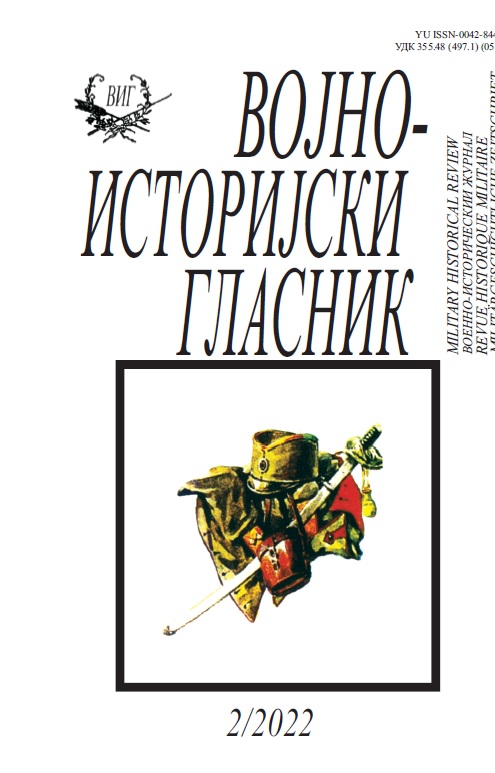„РАДНИЧКЕ НОВИНЕ” И „БУДУЋНОСТ” 1912‒1915. ГОДИНЕ (ПОГЛЕД НА РАТНУ ЦЕНЗУРУ)
„RADNIČKE NOVINE” AND „BUDUĆNOST” NEWSPAPERS 1912–1915 (A VIEW ON CENSORSHIP IN WAR)
Author(s): Nenad Ž. PetrovićSubject(s): History, Social Sciences, Media studies, Communication studies, Military history, Recent History (1900 till today), Pre-WW I & WW I (1900 -1919)
Published by: Institut za strategijska istraživanja
Keywords: preventive censorship; freedom of press; army; war; social democracy
Summary/Abstract: The paper deals with the censorship of two opposition socialdemocratic newspapers during four years of the Balkan wars and the First World War. ”Radničke Novine” moved its editorial office to Niš in the summer of 1914. The newspaper was the target of censorship. After its closure in the summer of 1915, ”Budućnost“ was launched as a nominally new newspaper, which continued the publication of ”Radničke Novine”. The paper deals with the examples of censorship by omitting parts or whole texts, leaving white parts as a trace of intervention. Also, the paper tries to explain motives for the implementation of censorship over these two newspapers and points to examples when censorship did not intervene. The paper presents an attempt to look at the problem of freedom of press in the conditions of war. At the beginning of the First World War, the Government introduced anticonstitutional preventive censorship. While data on the press censorship before the beginning of the First World War are obtained from the police and court documents, we learn about censorship intervention during the war period indirectly according to white parts of the printed text. The censor used to mark inappropriate parts in a submitted text, and then the typesetter had to delete the text from the prepared setting. In contrast to the pre‐war practice, in case of the newly introduced censorship, the censor was not obliged to explain in writing the measure of prohibition, and therefore we do not have documents, from which we could find out what was written in those parts of the text that were deleted. One can only speculate about this from the context of the paper.
Journal: Vojnoistorijski glasnik
- Issue Year: 2022
- Issue No: 2
- Page Range: 80-101
- Page Count: 22
- Language: Serbian

